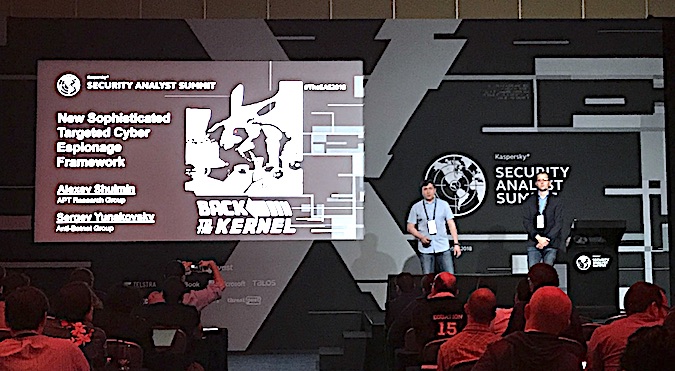CANCUN – KASPERSKY SECURITY ANALYST SUMMIT – A cyber espionage group whose members apparently speak English has been targeting entities in the Middle East and Africa by hacking into their routers.
Researchers at Kaspersky Lab have analyzed this threat actor’s operations and determined that it has likely been active since at least 2012, its most recent attacks being observed in February.
Roughly 100 Slingshot victims have been identified, a majority located in Kenya and Yemen, but targets have also been spotted in Afghanistan, Libya, Congo, Jordan, Turkey, Iraq, Sudan, Somalia and Tanzania. While the campaign seems to focus on individuals, the security firm has also observed attacks aimed at government organizations and, strangely, some internet cafés.
The main piece of malware used by this group — dubbed Slingshot based on internal strings found by researchers — is interesting due to the fact that it infects computers through compromised routers, specifically ones made by Latvia-based Mikrotik.
It’s unclear how the targeted routers get compromised, but Kaspersky pointed out that the WikiLeaks Vault7 files, which are believed to be tools developed and used by the CIA, do include a Mikrotik exploit. The vendor claims to have patched the vulnerability leveraged by the Vault7 exploit and it’s unclear if that is the initial vector used by the attackers.
Once they gain access to a router, hackers can abuse a legitimate piece of software called WinBox, a management tool provided by Mikrotik that downloads some DLL files from the router and loads them directly into the computer’s memory.
By abusing this functionality, the Slingshot hackers can deliver the malware to the targeted router’s administrator.
The malware is basically a first-stage loader that replaces legitimate DLL files in Windows with malicious versions that have the exact same size. The malicious DLLs are loaded by the services.exe process, which has SYSTEM privileges.
The main modules downloaded by Slingshot are called Cahnadr and GollumApp. Cahnadr, also known as Ndriver, is a kernel-mode payload and it provides all the capabilities required by user-mode modules, including anti-debugging, rootkit functionality, injecting modules into the services.exe process, network communications, and sniffing capabilities for various protocols.
GollumApp is the main user-mode module and it’s designed to manage other user-mode modules while constantly interacting with Cahnadr. It includes a wide range of spying-focused functionality that allows attackers to capture screenshots, log keystrokes, collect system and network data, harvest passwords, manipulate clipboard data, run new processes with SYSTEM privileges, and inject other malicious modules into a specified process.
Since it can run in kernel mode, a feature typically present in sophisticated threats, the malware allows attackers to take full control of the infected machine.
Slingshot attempts to evade detection by using various methods, including calling system services directly in an effort to bypass security product hooks, encrypting strings in its modules, and selectively injecting processes depending on what security product is present.
Slingshot also employs some clever techniques when it comes to command and control (C&C) communications – the malware hides its traffic in legitimate communication protocols, keeping an eye out for packets that contain a special mark.
As for who is behind Slingshot, Kaspersky says it bears the hallmarks of a state-sponsored cyber espionage campaign. Its level of sophistication rivals the one of actors such as ProjectSauron and Regin.
Researchers said most of the debug messages are written in perfect English and several strings in the code reference Lord of the Rings characters.
“Slingshot is a sophisticated threat, employing a wide range of tools and techniques, including kernel mode modules that have to date only been seen in the most advanced predators,” said Alexey Shulmin, lead malware analyst at Kaspersky Lab. “The functionality is very precious and profitable for the attackers, which could explain why it has been around for at least six years.”
